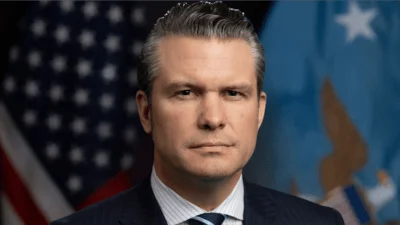More information about Panama is available on the Panama Page and from other Department of State publications and other sources listed at the end of this fact sheet.
U.S.-PANAMA RELATIONS
The United States established diplomatic relations with Panama in 1903 following its declaration of independence from Colombia. That year, through the Hay/Bunau-Varilla Treaty, Panama granted the United States rights to a zone spanning the country to build, administer, fortify and defend an inter-oceanic canal. The Panama Canal opened in 1914. In 1977, the United States and Panama signed the Carter-Torrijos Treaties to set basic governing standards for the Canal through 1999 and guarantee its permanent neutrality. These treaties went into effect in 1979, and on Dec. 31, 1999, Panama assumed full jurisdiction and operational control over the Canal.
Changes in Panama’s government and tensions over the Canal led to the interruption of diplomatic relations several times during the 20th century. From 1987-1989, relations deteriorated sharply under the rule of Manuel Noriega. During Operation Just Cause in 1989, U.S. troops entered Panama and captured Noriega, who would not cede power following elections. Since the restoration of democracy, Panamanians have elected five presidents from three political parties in free and fair elections.
Panama’s location and role in global trade make its success vital to U.S. prosperity and national security. Panama’s key location along major land and sea transit routes makes it a critical partner in the interdiction of illegal drugs destined for the United States. While Panama’s economic growth rate is among the highest in the hemisphere, the country faces the challenge of making this growth more inclusive. It also faces added pressure for more fiscal transparency as it enforces recent anti-money laundering legislation. Increasing pressure from drug trafficking and organized criminal activity - including migrant smugglers - contributes to security problems that threaten to undermine Panamanian security, democratic institutions, and economic prosperity. Because of our shared history, cultural ties between both countries are strong.
U.S. Assistance to Panama
U.S. assistance to Panama aims to ensure Panama remains a secure, prosperous, and democratic country that continues to work with the United States as its principal partner in the region. The United States and Panama work together to advance common interests in improving citizen safety and strengthening the rule of law. They cooperate in many ways, including combating illegal drug trafficking and other criminal activity, as well as promoting economic, democratic, and social development through U.S. and international agencies.
The U.S. Strategy for Central America (Strategy) guides U.S. diplomatic efforts and foreign assistance in the region. The Strategy is a bipartisan, multiyear U.S. government plan covering all seven Central American countries (Belize, Costa Rica, El Salvador, Guatemala, Honduras, Nicaragua, and Panama). The Strategy aims to secure U.S. borders and protect American citizens by addressing the security, governance, and economic drivers of illegal immigration and transnational crime, while increasing opportunities for U.S. and other businesses. The Strategy focuses on three overarching lines of action: 1) promoting prosperity, 2) enhancing security, and 3) improving governance.
Bilateral Economic Relations
The United States and Panama have signed a bilateral investment treaty and a Trade Promotion Agreement. The trade agreement eliminates tariffs and other barriers to U.S. exports, promotes economic growth, sets high standards for the treatment of investments, provides a framework for resolution of investment or trade disputes, and expands trade between the two countries. In 2016, Panama inaugurated the expansion of the Panama Canal, which has provided substantial benefits to Panama and many U.S. East Coast ports. U.S. exports to Panama include oil, machinery, aircraft, agricultural products, and low-value shipments. The United States is the number-one user of the Canal, with 68 percent of transits heading to or from U.S. ports. U.S. imports from Panama include fish and seafood, gold, cane sugar, bananas, and pineapples. The finance/insurance and wholesale trade sectors lead U.S. direct investment in Panama, while the manufacturing and real estate sectors lead Panamanian direct investment in the United States.
Panama’s Membership in International Organizations
Panama and the United States belong to a number of the same international organizations, including the United Nations, Organization of American States, International Monetary Fund, World Bank, International Maritime Organization, and World Trade Organization.
Bilateral Representation
Principal U.S. embassy officials are listed in the Department’s Key Officers List.
Panama maintains an embassy in the United States at 2862 McGill Terrace, NW, Washington, DC 20008 (tel: 202-483-1407).
More information about Panama is available from the Department of State and other sources, some of which are listed here:
CIA World Factbook Panama Page
U.S. Embassy
USAID Panama Page
History of U.S. Relations With Panama
Office of the U.S. Trade Representative Countries Page
U.S. Census Bureau Foreign Trade Statistics
Export.gov International Offices Page
Library of Congress Country Studies
Travel Information
Source: U.S. Department of State, Bureau of Western Hemisphere Affairs







